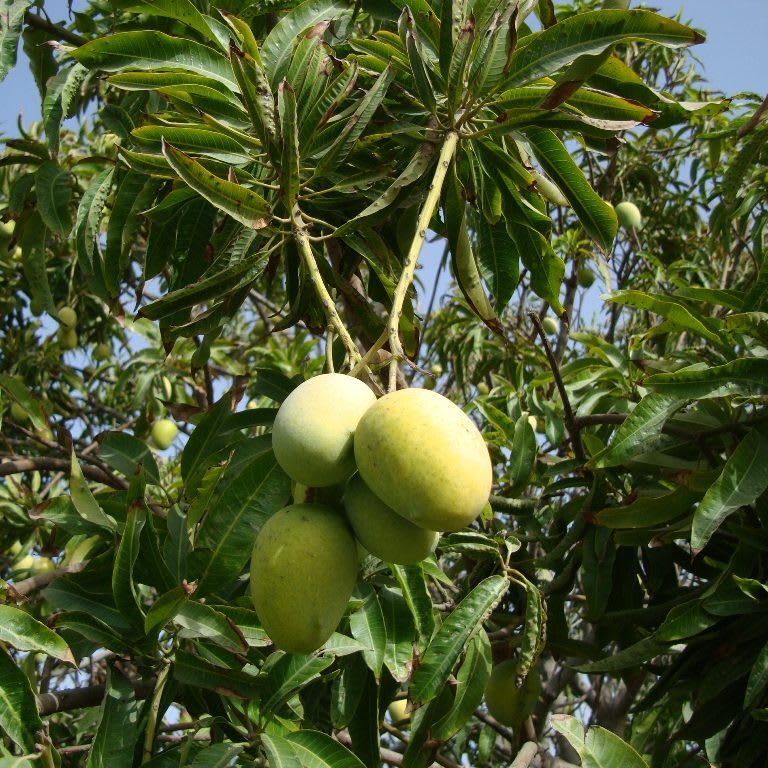
🌿 Morphology
🌞 Growing conditions
🌍 Origin and family
🌾 Uses
Warning: Despite the care taken in writing this sheet, it is essential to cross-reference sources before using or consuming any plant. When in doubt, consult a qualified professional
Permaculture uses
Mangoes are primarily grown for their delicious fruit, eaten fresh, dried, or processed into juices, jams, and chutneys. The leaves and bark have medicinal uses, including anti-inflammatory and antioxidant properties. In permaculture, mango trees provide shade and can be integrated into food forests, creating diverse and resilient ecosystems. Some cultivars, such as 'Tommy Atkins' or 'Alphonso', are known for their specific flavor and yield characteristics.
Permapeople description
A tropical fruit tree widely cultivated for its delicious and nutritious fruit.
Botanical description
Mangifera indica is a large evergreen tree in the Anacardiaceae family, reaching heights of 30-40 meters. It has a broad, rounded canopy and a sturdy trunk. The leaves are alternate, simple, lanceolate, and initially reddish, turning dark green as they mature. The flowers are small, fragrant, and borne in terminal panicles. The fruit is a drupe, varying in size, shape, color, and flavor depending on the cultivar. The flesh is typically yellow-orange, juicy, and sweet. The seed is enclosed in a fibrous husk.
Companion planting
Mango trees benefit from nitrogen-fixing plants nearby, such as legumes. Avoid planting them near plants that compete heavily for resources or are susceptible to similar pests and diseases.
Propagation methods
Mangoes are typically propagated by grafting, budding, or air layering to ensure the desired cultivar traits are maintained. Seed propagation is possible but less reliable as the offspring may not be true to type. Cuttings are also possible but more challenging.
History and traditions
The mango originated in India and Southeast Asia, where it has been cultivated for thousands of years. It holds cultural and religious significance in many cultures, often symbolizing prosperity and happiness. In Hinduism, mango leaves are used in religious ceremonies, and the fruit is offered to deities. It spread throughout the world through trade and colonization.
Usage calendar
Flowering typically occurs in the dry season (winter/spring). Fruit harvesting depends on the cultivar and region, generally from spring to summer. Planting is best done during the rainy season to allow for good establishment. Pruning is done after harvest to maintain tree shape and promote new growth.
